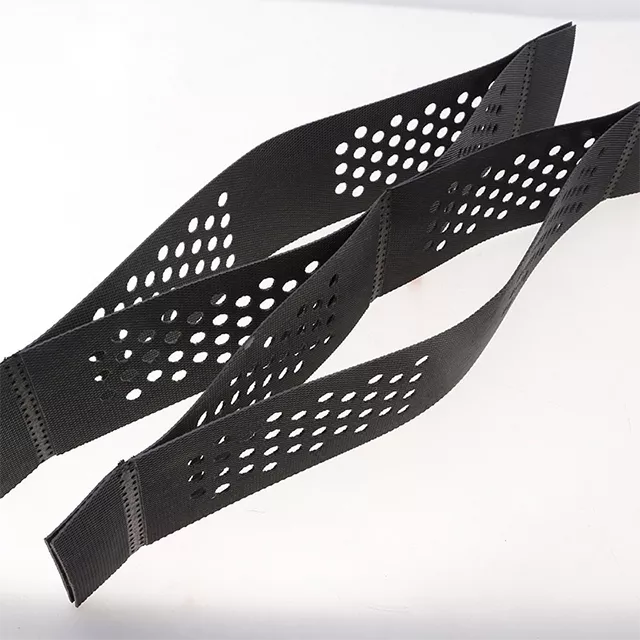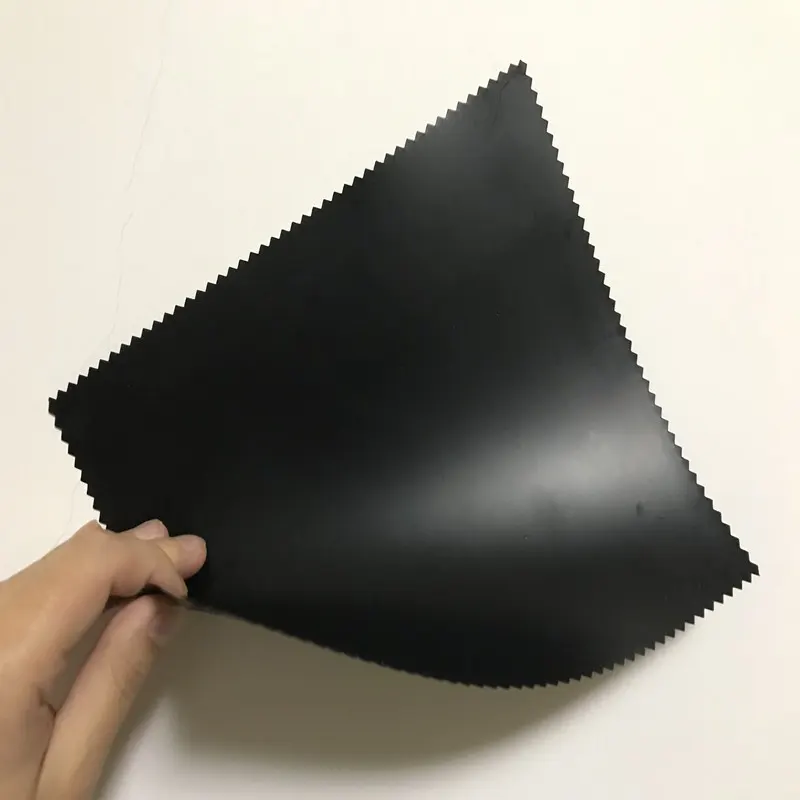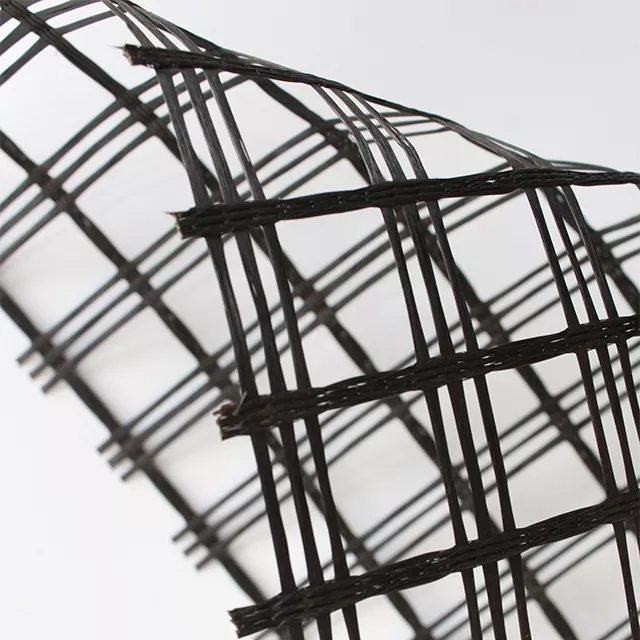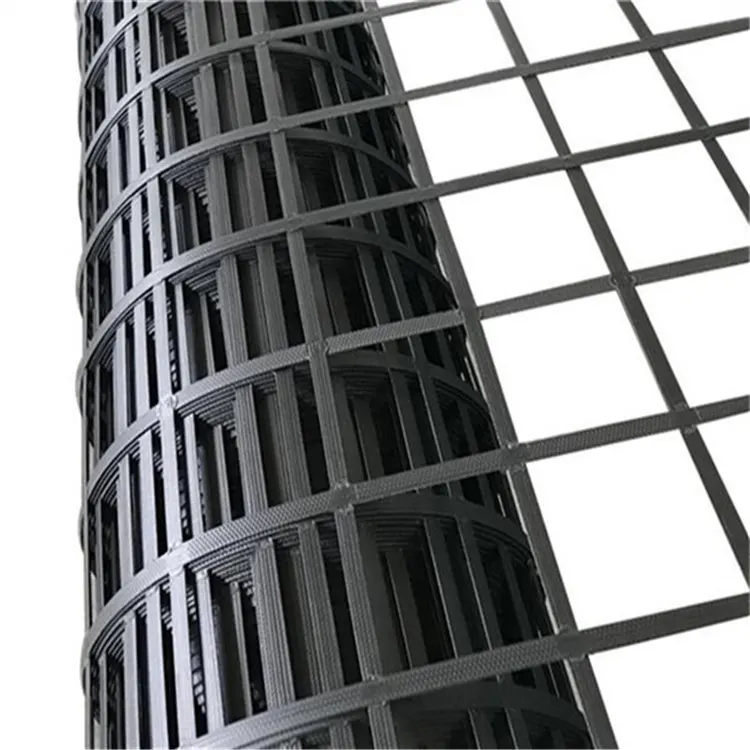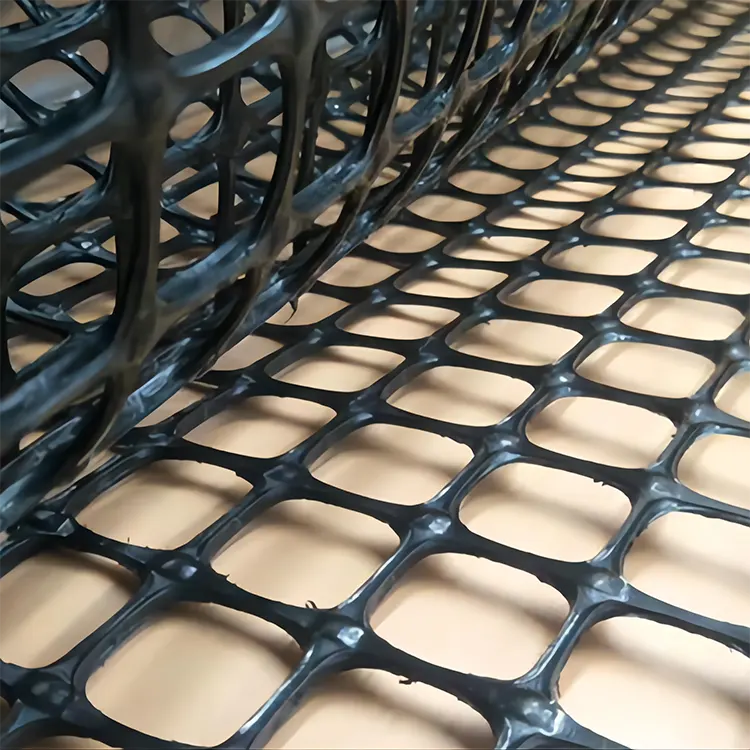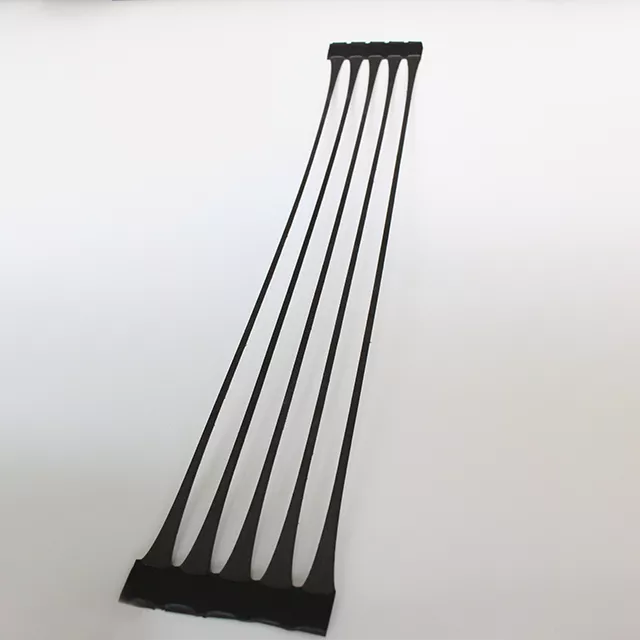Study on the time effectiveness of geogrid in delaying pavement cracks
Research on the effectiveness of geogrid in delaying pavement cracking has made significant progress in recent years. Combining material performance optimization, construction process improvements, and environmental adaptability analysis, a multi-dimensional technical framework has emerged. This article systematically explains the research background, mechanism, key research content, methods, construction, and conclusions.
1. Background and Significance
Reflective cracking is a long-standing technical challenge in highway engineering, especially in road reconstruction and soft soil roadbed construction. When cracks are present in existing cement concrete pavement or base layers, overlaying an asphalt surface layer can cause cracks in the underlying layer to gradually extend upward and penetrate the newly paved surface layer under the repeated effects of traffic loads and temperature fluctuations. This is reflective cracking.
Geogrids, as high-performance geosynthetics, are widely used between asphalt layers or between base and surface layers to delay or even prevent the development of reflective cracking. However, their effectiveness—i.e., the duration of their delaying effect, how it decays over time, and the factors that influence it—is a key issue in determining their engineering cost-effectiveness and reliability.
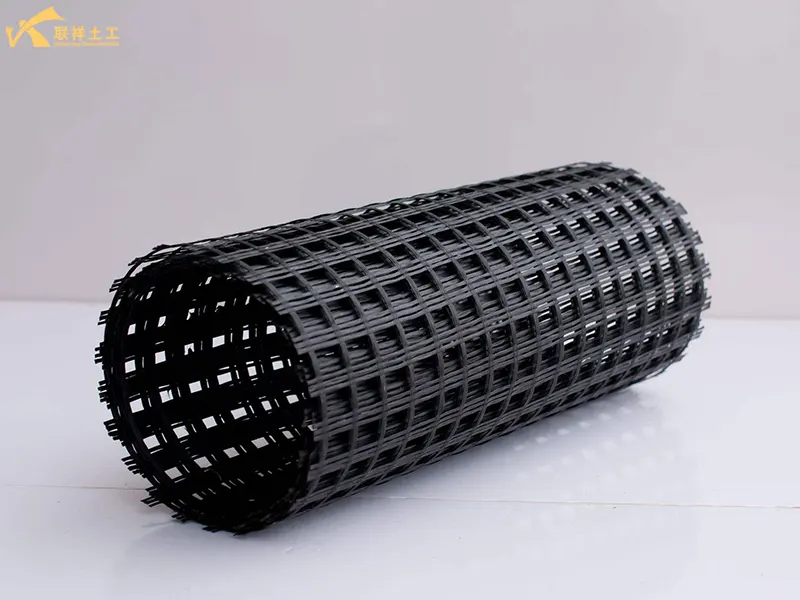
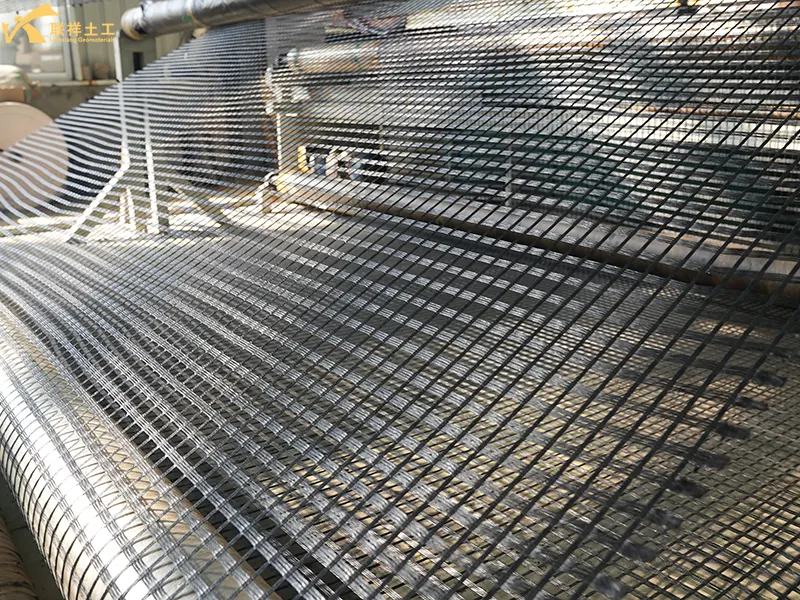
2. Geogrid Crack-Reducing Mechanism
2.1 Mechanism of Action:
- Reinforcement: Geogrid have high tensile strength and can withstand tensile stresses in the asphalt mixture, acting like "rebar" within the material. This disperses stress concentrations at the crack tips and improves the overall tensile strength of the pavement structure.
- Stress Absorption and Diffusion: The geogrid layer laid above the crack acts as a flexible interlayer, absorbing and dissipating vertical stresses from traffic loads and horizontal stresses caused by temperature fluctuations, preventing direct transmission of stress to the overlying asphalt surface layer.
- Bridging: This is the most direct effect of delaying reflective cracking. The geogrid spans the crack in the base layer, effectively limiting the relative displacement between the upper and lower sides of the crack (including vertical shear displacement and horizontal expansion displacement), preventing the crack from propagating upward.
2.2 Unique Performance of Commonly Used Geogrids in Crack Mitigation
2.2.1. Breakthrough in High-Temperature Stability of Fiberglass Geogrids
This new fiberglass geogrid, treated with a silane coupling agent and featuring a double-layer composite coating, maintains over 95% of its tensile strength at asphalt paving temperatures of 180-220°C, with an elastic modulus fluctuation of less than 8%. Its warp and weft tensile strength exceeds 50 kN/m, and its longitudinal elongation at break is kept below 3%, effectively suppressing stress relaxation caused by high-temperature creep. In a test section of a Xinjiang desert highway, at summer surface temperatures reaching 68°C, the geogrid's creep rate was 40% lower than that of conventional products. When used with a modified asphalt tack coat, the incidence of reflective cracking was reduced by 60%.
2.2.2. Carbon Fiber Geogrid's Low-Temperature Crack Resistance
Carbon fiber geogrids demonstrate excellent performance at temperatures as low as -10°C: When laid between AC13 and AC20 layers, the maximum flexural tensile strength of the mix increased by 13.97%, the flexural strain increased by 48.06%, and the time to failure was delayed by 61.66%. The effect was even more pronounced between AC20 and AC25 layers, with a 14.39% increase in strength, a 51.14% increase in strain, and a 66.95% increase in time to failure. Its high tensile strength (≥90 kN/m) and low elongation effectively absorb low-temperature shrinkage stresses, reducing the risk of brittle cracking.
2.2.3. Spatial Stress Distributor Effect of Multi-Directional Geogrids
Tri-directional geogrids, through their triangular mesh structure, evenly distribute loads in three dimensions, achieving a node strength of 3.5 kN/m², over 20% higher than bi-directional geogrids. On heavily loaded sections, rutting depth was reduced by 62% and the incidence of reflective cracking decreased by 78%. Furthermore, the strain hysteresis during construction and post-construction shrinkage-rebound properties were improved, making it suitable for complex stress environments.
3. Key Aspects of "Aging" Research
"Aging" research essentially examines the attenuation patterns of the aforementioned mechanisms over time and under the influence of external factors. Key research areas should include:
3.1. Material Aging Performance Degradation
- Long-Term Mechanical Property Changes: Study the changes in key indicators such as tensile strength, nodal strength, and elongation of geogrids (especially fiberglass and plastic geogrids) after long-term loads and temperature cycling.
- Environmental Aging: Study the molecular chain breakage and embrittlement of polymer materials under environmental factors such as high-temperature asphalt paving, water, and ultraviolet light, leading to material performance degradation.
- Compatibility with Asphalt: Study the long-term adhesion between the grid surface coating (such as modified asphalt coating) and the asphalt mixture. Adhesion failure is one of the key factors leading to the termination of aging. If the grid becomes detached from the asphalt layer, its reinforcement and bridging effects will be significantly reduced.
3.2. Long-term Behavior within the Pavement System
- Time-Dependent Interfacial Bond Performance: Direct shear tests and pull-out tests are conducted to simulate the degradation of the bond strength at the grid-asphalt interface under long-term vehicle load vibration.
- Fatigue Performance Improvement: Indoor fatigue tests (such as three-point bending beam fatigue tests and indirect tensile fatigue tests) are conducted to compare the fatigue life extension multiples of asphalt specimens with and without grid at different stress levels. A fatigue life prediction model is then developed.
- Long-term Observation and Inverse Analysis: Long-term monitoring of actual projects is conducted, with regular measurements of crack width, length, and growth rate. Combined with the Pavement Performance Index (PCI), inverse analysis is performed to estimate the effective service life of the grid under actual operating conditions.
4. Long-Term Performance Study Under Environmental Coupling
4.1. Temperature-Load Synergistic Effect
Dynamic Thermomechanical Analysis (DMA) shows that the storage modulus of the silane coupling agent-treated fiberglass grid reaches 25 GPa at 120°C, a 40% increase compared to the untreated sample. On a test section of the Sichuan-Tibet Highway, after extreme temperature cycling from -30°C to 75°C, the deflection of the road surface covered with the grid remained within 0.25 mm, demonstrating a 40% improvement in deformation resistance compared to traditional structures.
4.2. Wet-Dry Cycles and Chemical Erosion Protection
Slope monitoring of expansive soils indicates that the geogrid reinforcement layer can reduce the fluctuation of the underlying soil moisture content by 70%, effectively isolating the structure from the effects of atmospheric wet-dry cycles. Its UV-resistant coating and acid- and alkali-resistant properties (pH 3-12) ensure a 10-year tensile strength retention rate of ≥85% in corrosive environments such as coastal areas and chemical industrial zones.
4.3. Crack Propagation Behavior under Fatigue Loads
Four-point bending fatigue tests combined with digital image correlation (DIC) technology revealed that glass fiber geogrids can reduce crack propagation rates by 50%-70%, and the failure mode shifts from brittle fracture to ductile failure. On a heavy traffic section with an average daily axle load of 13 tons, the rutting depth of the reinforced pavement decreased by 62% over five years, with no dislocation of the grid layer.
5. Research Methods and Technical Approach
A systematic study typically follows the following technical approach:
- 5.1. Literature Research and Current Status Analysis: This study collects relevant domestic and international research, standards, and practical experience.
- 5.2. Material Selection and Characterization: Several commonly used geogrids (e.g., glass fiber geogrid, polyester geogrid, and plastic geogrid) are selected and their initial physical and mechanical properties are tested.
- 5.3. Accelerated Aging Tests:
- Thermo-oxidative Aging: Grid samples are placed in a high-temperature oven to simulate long-term thermal effects.
- Water Immersion Aging: Samples are immersed in water with varying pH values to simulate water damage.
- UV Aging: A UV aging chamber is used to simulate the effects of sunlight. After aging, the mechanical properties are retested to establish a performance-time relationship model.
- 5.4. Indoor Model Testing (Core Step):
- Composite Beam Specimens: A cracked base layer is fabricated, and a grid and asphalt layer is laid on top to form a composite beam specimen.
- Fatigue Loading: Repeated loading is performed on a universal testing machine (MTS) to simulate vehicle loads.
- Temperature Cycling: Temperature cycling is performed in an environmental chamber to simulate thermal stress.
- Real-Time Monitoring: Strain gauges and digital image correlation (DIC) are used to monitor the crack development process and strain distribution of the grid.
- Comparative Analysis: A control group without the grid is established to quantify the grid's effect on crack propagation rate and fatigue life.
- 5.5. Numerical Simulation:
- A pavement structure model containing the grid is established using finite element software (such as ABAQUS or ANSYS).
- The material constitutive model of the grid and the interface layer, as well as aging parameters (such as the bond strength decay function), are defined.
- The stress-strain response of the pavement structure under long-term load and temperature fields is simulated to predict crack development and verify the predictions with experimental results.
- 5.6. On-site Engineering Verification:
- Long-term follow-up observations are conducted on sections of road where grids have been installed. Core sampling is used to verify interfacial adhesion, and deflection and ground-penetrating radar are used to assess the overall condition of the pavement structure.
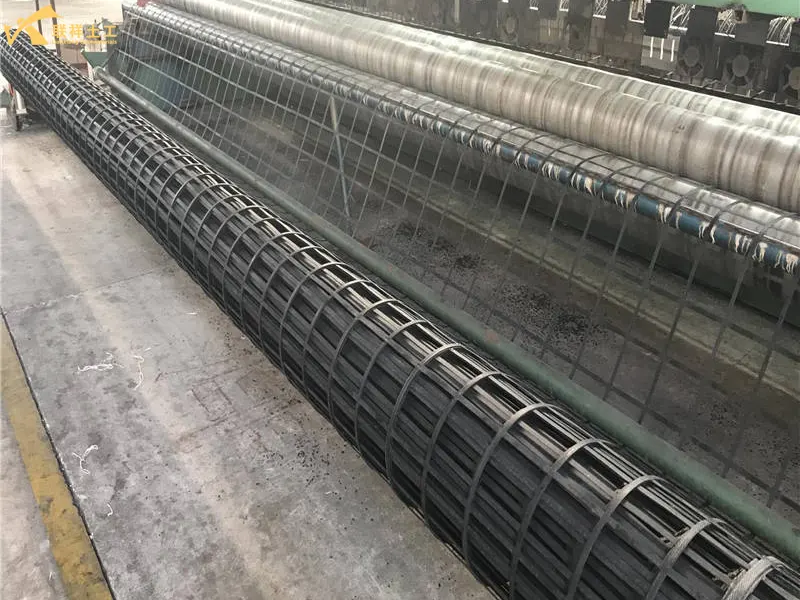
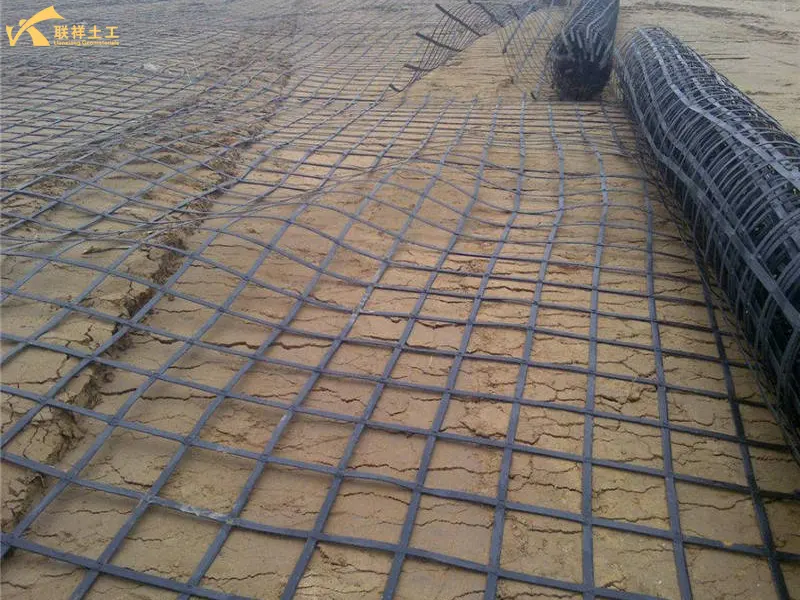
6. Construction Process Innovation and Engineering Application
6.1. Precision Construction Technology
- The application of laser positioning systems and infrared thermal imaging cameras enables grid pretension control to 2-3 kN/m, with a bond layer temperature gradient of ≤±5°C/m, achieving a tensile strength utilization rate exceeding 85%. On a port access highway in a coastal industrial zone, bidirectional warp-knitted grids combined with high-viscosity modified asphalt increased interfacial shear strength by 40%, extending the maintenance cycle to 42 months and reducing overall costs by 54%.
6.2. Solutions for Special Conditions
- Existing Road Reconstruction: When overlaying an asphalt layer on an old concrete pavement, fiberglass grids can delay the onset of reflective cracks by 3-7 years and reduce the overlay layer thickness by 20%-30%. - Soft foundation treatment: Field monitoring of a 50m-high, non-panel reinforced embankment showed that the maximum tensile strain of the geogrid occurred 4-6m from the backfill surface. The shrinkage and rebound rate reached 15%-20% 1.5 years after construction, effectively adjusting the earth pressure distribution.
7. Expected Conclusions and Outlook
The above research can draw the following expected conclusions:
- Quantifying Timeliness: Determine the effective service life of different types of geogrids in delaying reflective cracking under specific environmental and loading conditions (for example, a delay of 5-8 years or an extension of the pavement's service life by 30%-50%).
- Ranking of Key Influencing Factors: Determine the primary and secondary factors influencing timeliness, such as interfacial bond durability > material aging resistance > construction quality.
- Developing a Predictive Model: Construct a predictive model for reflective crack development that takes into account material aging, interfacial degradation, load, and temperature to provide a basis for design.
- Optimized Design and Construction Guidelines: Provides time-sensitive recommendations for geogrid selection, optimal installation locations, and key construction control points to ensure long-term bonding performance (such as tack coat application, paving temperature control, and compaction techniques).
8. Outlook: Future research may focus on:
8.1. Intelligent Monitoring Technology
- Distributed fiber optic sensing systems can monitor geogrid strain and interfacial bonding in real time. Combined with machine learning algorithms, they can predict crack development trends and implement preventive maintenance.
8.2. Green and Sustainable Materials
- Biological-based geogrids (such as polylactic acid) and biodegradable coating technologies are under development, with the goal of achieving a natural degradation rate of ≥90% within 50 years while maintaining performance.
- Development of new high-performance geogrids, such as self-adhesive and composite geogrids, to enhance interfacial durability.
- Application of intelligent monitoring technologies, such as embedding fiber optic sensors in the geogrid to monitor its operating status in real time.
- Lifecycle cost analysis to evaluate the long-term economic benefits of geogrid applications.
8.3. Multiscale Coupling Analysis
- Cross-scale modeling, from macroscopic structural responses to microscopic molecular chain motion, will provide more precise theoretical support for geogrid-soil interaction mechanisms under extreme environments.
In summary, in-depth research on the effectiveness of geogrid in delaying pavement cracking will directly promote the more scientific, economical, and long-term application of this technology in road engineering. Future research should further focus on intelligent monitoring, green material development, and long-term performance prediction under complex working conditions to promote the in-depth application of this technology in areas such as smart highways and low-carbon infrastructure.
Written by
SHANDONG LIANXIANG ENGINEERING MATERIALS CO., LTD.
Editor Fan
WhatsApp:+86 139 5480 7766
Email:admin@lianxiangcn.com
Contact
-
WhatsApp
-
E-MailE-Mail:admin@lianxiangcn.com
-
WeChatWeChat:18554180188


